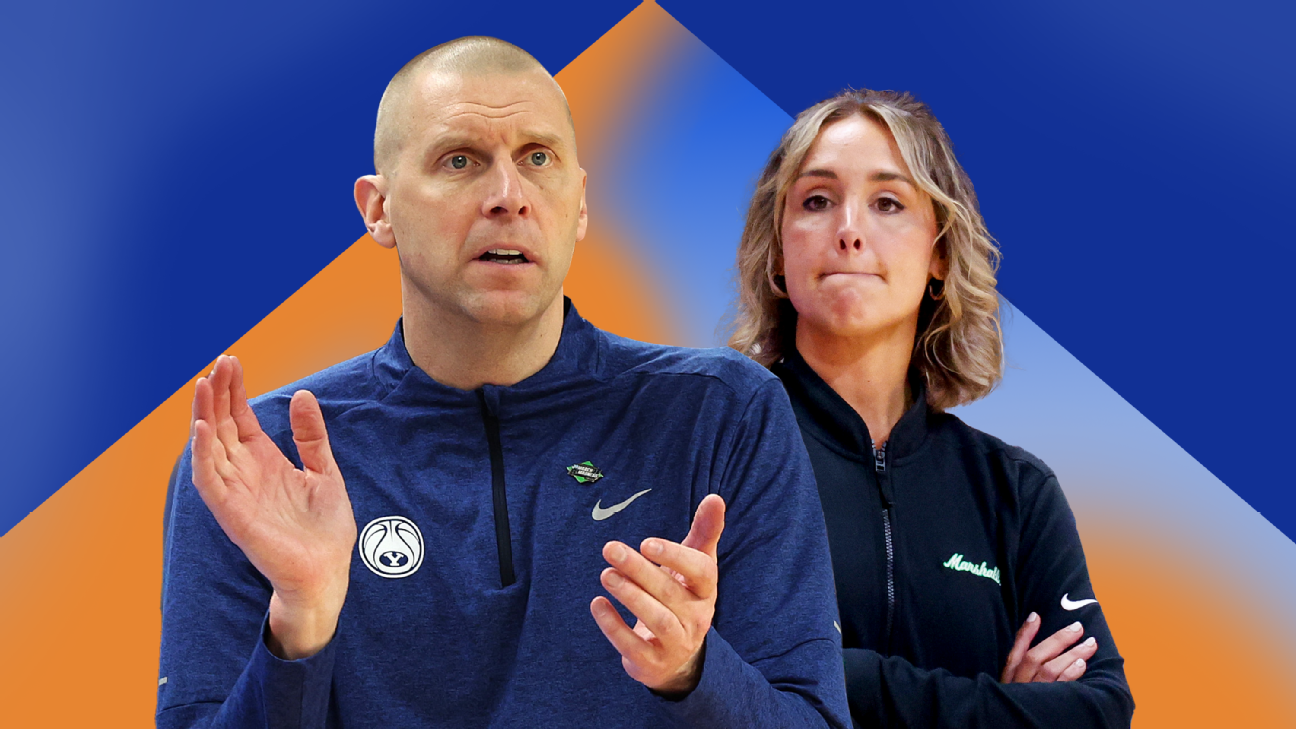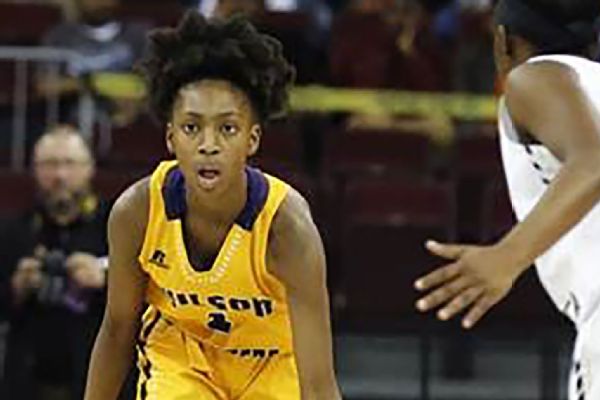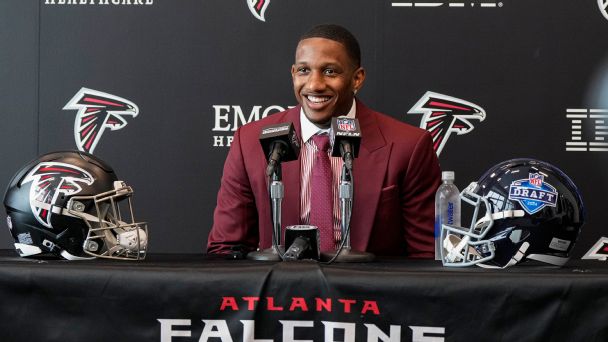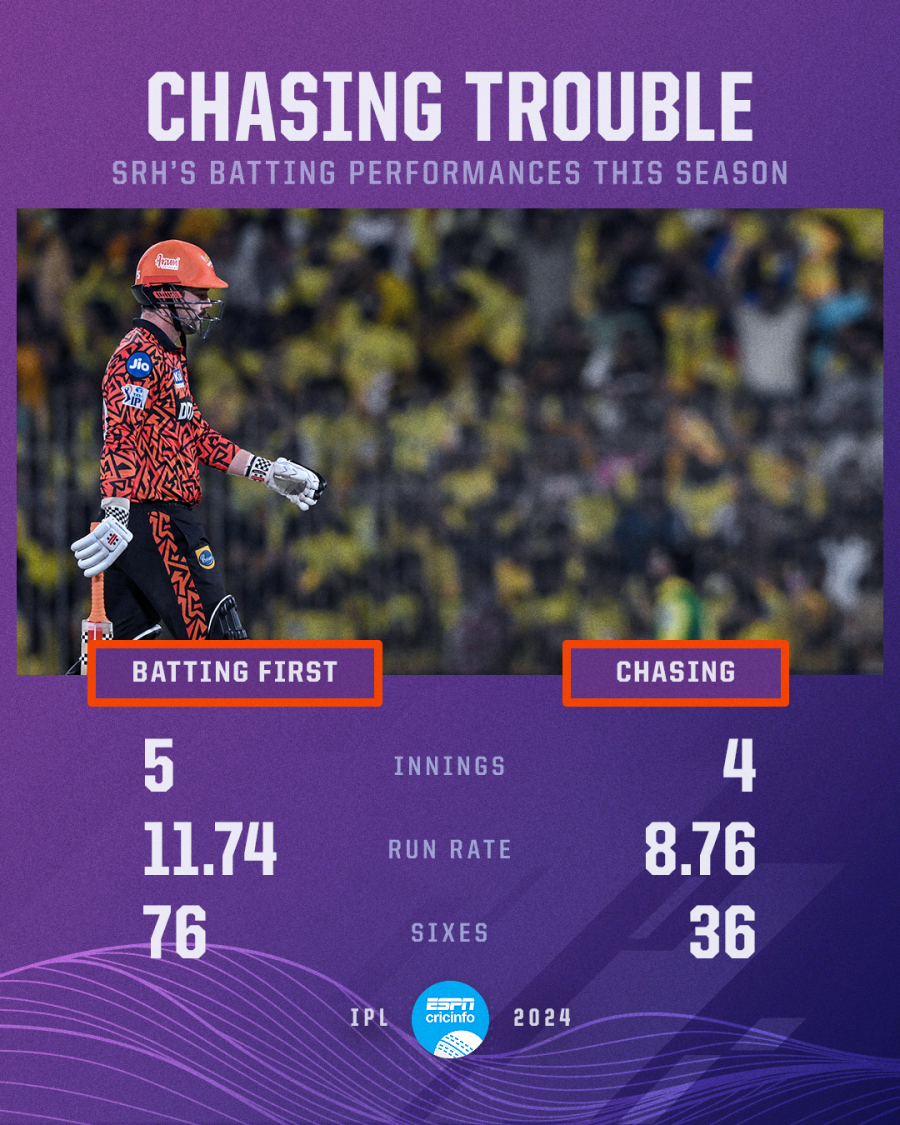![USWNT March6-2024 L-R Lindsey Horan Rose Lavelle Tierna Davidson Lynn Williams Emily Sonnett Casey Krueger Naomi Girma [1296x729]](https://a.espncdn.com/photo/2024/0409/r1316640_1296x729_16-9.jpg)
Rangers polish off Caps for first sweep since 07
The SheBelieves Cup is in the books, and the next time the U.S. women's national team steps on the field, head coach Emma Hayes will finally be on the sidelines after a six-month wait for her arrival.
Hayes will have only four games in charge of the team before the Olympics. That's four games to integrate with the team, implement her style and, ultimately, decide which players she thinks can lead the team to a gold medal. Her absence from the U.S. sidelines as she finishes her duties at Chelsea make for the most extensive period of formal transition in U.S. women's program history.
It also exacerbates the uncertainty around the U.S. player pool.
Which players are going to make the USWNT's Olympic roster? For now, Hayes is thinking about that from afar in collaboration with interim coach Twila Kilgore, who has been pulling the strings in training camps since late August. But as Kilgore wraps up her final game as the interim coach, it's a good time for ESPN to take a crack at forecasting this summer's roster with our 2024 USWNT Big Board.
Like any great athlete cliché, this Big Board lives in the present, unconsumed by what was or might be in the future. In other words: What have you done lately? That's the name of the roster game, and it's why we've already seen a number of changes from our first post-World Cup Big Board we did in October.
Looking only at current form is easier said than done since some top players are returning from injuries, but it is all to say that these are what the USWNT's positional depth charts look like right now. Expect changes to take place in the coming months as players' form ebbs and flows, and Hayes' plans become clear.
How the USWNT Big Board worksUltimately, Hayes is tasked with selecting 18 players for the Olympics (plus four alternates). If Hayes had to pick today, what would the team look like?
For this exercise, we've left out players who have endured long-term injuries (like Midge Purce, who tore her ACL a few weeks ago), but have kept around those players believe (it's always important to stress that word) to be dealing with more minor injuries. We've been through this before, after all: midfielder Rose Lavelle missed three months of action last spring but was ready for the 2023 World Cup.
Here are the Big Board categories:
Tier 1: Locks. A clear first-choice player who is contending for a starting role. Tier 2: In the squad. Not a starter, but a substitute and player on the bench available to go into games. Tier 3: On the bubble. These are players who could be among the final selections or who might be alternates. Players who have had a passing look or players who were once integral but no longer seem in favor fit into this category. Tier 4: Longshots. These are the players whose chances of making the Olympics now look low. This includes players performing well for their clubs who haven't gotten a look. This category also includes injured players who, today, aren't healthy enough to make it (though it doesn't mean their status can't change once they recover). Goalkeepers Lock: Alyssa Naeher In the squad: Casey Murphy On the bubble: Jane Campbell, Aubrey Kingsbury Longshot: Adrianna Franch, Katie LundGoalkeeper is easily the least mysterious position on a U.S. roster in flux. Alyssa Naeher is in exceptional form and clearly the team's No. 1 in goal. Casey Murphy has solidly been Naeher's backup for two years now and will be on the Olympic roster barring injury or catastrophic form in the coming months.
The question, then: what to do about the third goalkeeper spot? Aubrey Kingsbury was the No. 3 at the 2023 World Cup, but Jane Campbell appears to have moved in front of her based on her selections to the USWNT's Gold Cup roster and SheBelieves Cup roster. The reality of the No. 3 goalkeeper role is that you need a player who can push the other two in training and do the dirty work needed for the team in very specific training scenarios. Whether that is an advantage to the younger Campbell or the World Cup-experienced Kingsbury remains unclear.
Fullbacks Locks: Crystal Dunn, Emily Fox In the squad: Jenna Nighswonger On the bubble: Casey Krueger Longshots: Eva Gaetino, Kelley O'Hara, Sofia Huerta, M.A. Vignola, Gisele ThompsonFull-back depth has been a perpetual issue for the U.S. women's national team.
Multiple coaching regimes have turned to converting forwards or wingers into full-backs, with varying success. Crystal Dunn represents the extreme as a talented, do-it-all player who might not be best used in that role, but was and is one of the team's best options for the role. That remains true, as does the fact that Emily Fox has clearly locked down one of the starting roles.
Jenna Nighswonger is the most interesting player of the bunch. A year ago, Nighswonger was a rookie in the National Women's Soccer League who was thrown into a defensive role for NJ/NY Gotham FC on opening day after former USWNT defender Ali Krieger was injured 10 minutes into the match. Nighswonger latched onto a fullback role for her club and in October we rated her as a "longshot." The next month, she was named NWSL Rookie of the Year and helped Gotham win an NWSL Championship.
Her first call-up followed, and she immediately took hold of a prominent role both as a traditional full-back and a third center-back when the USWNT has tried a three-back. Hayes has tried a three-back system with Chelsea before and likes to have one of those players be a more athletic full-back. Nighswonger has positioned herself to make the Olympic roster.
Casey Krueger is Nighswonger's primary competition and also a versatile defender who can play centrally or wide, which is a must on a small Olympic roster. Krueger is a veteran who could very realistically make this roster, but right now Nighswonger is earning more opportunities.
Centerbacks Locks: Naomi Girma, Tierna Davidson In the squad: Abby Dahlkemper On the bubble: Becky Sauerbrunn, Alana Cook Longshot: Sarah Gorden, Sam StaabNaomi Girma is the quiet star of this USWNT and just about the only bright spot from a wretched 2023 World Cup. She is a generational player who instantly became the best defender in the NWSL as a rookie, and she will be the rock of the USWNT's defense for the next decade barring injuries.
Tierna Davidson has emerged as Girma's preferred partner in the Kilgore era, which gives the USWNT a left-footed left center-back (often paired with the left-footed Nighswonger). Davidson is a 2019 World Cup champion whose torn ACL in 2022 and tight timeline for return ultimately cost her a spot at the 2023 World Cup. Now, she looks like a starter in defense.
Center-back has also been a position with oddly little depth for the USWNT lately, which was made clear at last year's World Cup when the just-returned Julie Ertz stepped into the role upon Becky Sauerbrunn's injury. Sauerbrunn, who turns 39 in June, appears to be on the outside looking in now -- as does Alana Cook, who didn't play a minute at last year's World Cup and just returned from a minor injury.
Abby Dahlkemper is in position to be the USWNT's third center-back on the Olympic roster. Dahlkemper was Sauerbrunn's reliable partner at the 2019 World Cup, but she had not played for the USWNT in nearly two years before her return in December following various injuries that led to major back surgery in late 2022. Since then, she has proved reliable and steady, including an impressive impromptu performance off the bench Saturday when Girma got hurt early.
Midfielders Locks: Rose Lavelle, Lindsey Horan In the squad: Sam Coffey, Korbin Albert On the bubble: Emily Sonnett, Olivia Moultrie, Savannah DeMelo, Ashley Sanchez Longshot: Lily Yohannes, Kristie Mewis, Andi Sullivan, Jaelin Howell, Vanessa DiBernardoLindsey Horan is the USWNT's captain who is capable of any of the three traditional midfield roles. The questions surrounding her are about whether she should play deeper or higher up the field, not whether she'll be in the squad.
Similarly, Rose Lavelle is arguably the USWNT's best technical player -- although Jaedyn Shaw might have a word -- and Lavelle is exceptional in the No. 10 playmaker role. Even at 75% health, she'd be a must on the Olympics roster.
Competition beyond those two is where things get interesting. For a few months, Emily Sonnett looked like the answer to the USWNT's longstanding void at the No. 6 defensive midfielder role. Her presence there against Sweden in the round of 16 of the 2023 World Cup, and in subsequent friendlies, restored balance to the team.
An even better balance was struck more recently, however, with the implementation of Sam Coffey and Korbin Albert as a double pivot. They started next to each other in those roles in each of the USWNT's knockout-round games of the Gold Cup, where the Americans impressively advanced from three very different types of games. Coffey is building off her impressive NWSL form for the Portland Thorns (and curious snubbing from the 2023 World Cup).
Albert, before news broke around her controversial social media history, earned regular praise from Kilgore for her ability to enter the USWNT environment and quickly learn the expectations for multiple midfield roles. The Paris Saint-Germain midfielder has featured at least partially in the No. 6, No. 8 and No. 10 roles. Assuming Hayes and Kilgore feel the locker room won't be disrupted -- locker room chemistry is certainly no minor detail -- then Albert looks likely to make the Olympic roster.
Doing so would leave several talented players stuck as alternates, and that's not even mentioning that (for now) we're not counting the multi-talented Shaw as a midfielder, even though she is best used as a No. 10.
Wingers Locks: Jaedyn Shaw, Trinity Rodman In the squad: Mallory Swanson On the bubble: Lynn Williams, Alyssa Thompson Longshot: Morgan WeaverFor now we're calling Shaw a winger, because she has played in that role before for the USWNT and at times for the San Diego Wave. That also could still prove to be her short-term role if Hayes wants to get the best 11 on the field and Lavelle is healthy. Both Shaw and Lavelle are best in the No. 10 role but capable if shoehorned into a wide position. Either way, Shaw is clearly the best young USWNT player and a lock for the Olympics already at 19 years old.
Trinity Rodman remains a hard-working force on the wing. She is audacious on the ball (how many times will she successfully pull off the spin-turn nutmeg?) and can frequently be found on her own endline covering for a full-back. Rodman is a star, which we already knew.
Mallory Swanson is, too, and her return to the field this spring is a reminder of what could have been for the USWNT at the 2023 World Cup. Swanson was sensational in 78 minutes against Japan and has looked solid for the Chicago Red Stars in their opening three games. She was arguably the best player in the world before she got hurt in April 2023, and she's picking back up in a place that could put her back on that trajectory.
Swanson's inclusion on the condensed Olympic roster would likely come at the expense of two World Cup players: the currently injured Lynn Williams, and 19-year-old Alyssa Thompson, who was effectively Swanson's replacement last year. Thompson has dealt with some minor injuries and has not been in camp since December.
The real question between Rodman, Shaw and Swanson: who starts?
Strikers Locks: Alex Morgan, Sophia Smith In the squad: Catarina Macario On the bubble: Ashley Hatch Longshot: NoneLess than two months after not making the initial Gold Cup roster, then joining the squad a day before the tournament as a replacement for Mia Fishel (torn ACL), Alex Morgan once again looks like the USWNT's starting No. 9.
Morgan has started the majority of recent USWNT games over Sophia Smith, who is 11 years younger. Even as Morgan faces another round of questions about her international future, she looks irreplaceable - at least on the roster, at minimum, even if a starting role is to be determined.
Smith is also a lock for the Olympics and can play her preferred central position or provide depth on the wings. The return of Catarina Macario after two years away from the team due to a torn ACL is the real roster shuffle.
Macario was being developed into the focal point of the USWNT's attack in early 2022 -- when another phase of this generational transition saw Morgan watching from afar. Former head coach Vlatko Andonovski looked to utilize Macario as a false nine who could interchange with Lavelle -- it worked brilliantly but in brief spells, but Macario's injury put the concept on pause.
Now, Macario is back, and she is easily talented enough to demand a spot on the field. She is also versatile as a generational player, meaning the USWNT can present several different attacking looks depending on the opponent.













